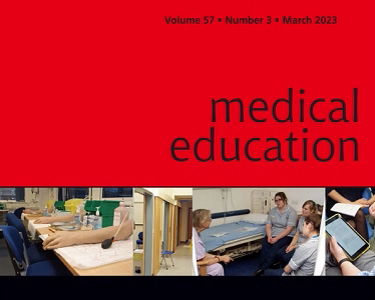How medical learners and educators decide what counts as mistreatment: A qualitative study
Academic Publications

Author(s): Vanstone, M., Cavanagh, A., Molinaro, M., Connelly, C. E., Bell, A., Mountjoy, M., Whyte, R., & Grierson, L.
Date: 2023
Resource: Medical Education
Introduction
The mistreatment or abuse (maltreatment) of medical learners by their peers and supervisors has been documented globally for decades, and there is significant research about the prevalence, sequelae and strategies for intervention. However, there is evidence that learners experience maltreatment as being less clear cut than do researchers, educators and administrators. This definitional ambiguity creates problems for understanding and addressing this issue. The objective of this study was to understand how medical learners and educators make sense of less-than-ideal interactions in the clinical learning environment, and to describe which factors influenced their perception that the encounter constituted maltreatment.
Methods
Using constructivist grounded theory, we interviewed 16 medical students, 15 residents or fellows, and 18 educators associated with a single medical school (n = 49). Data collection began with the most junior learners, iterating with analysis as we progressed through the project. Constant comparative analysis was used to gather and compare stories of ‘definitely’, ‘maybe’ and ‘definitely not’ maltreatment across a variety of axes including experience level, clinical setting and type of interaction.
Results
Our data show that learners and educators have difficulty classifying their experiences of negative interpersonal interaction, except in the most severe and concrete cases. While there was tremendous variation in the way they categorised similar experiences, there was consistency in the elements drawn upon to make sense of those experiences. Participants interpreted negative interpersonal interactions on an individual basis by considering factors related to the interaction, initiator and recipient.
Conclusions
Only the most negative behaviour is consistently understood as maltreatment; a complex process of individual sense-making is required to determine the acceptability of each interaction. The differences between how individuals judge these interactions highlight an opportunity for administrative, research and faculty development intervention.
Related Research Areas: Knowledge Hiding & Sharing

